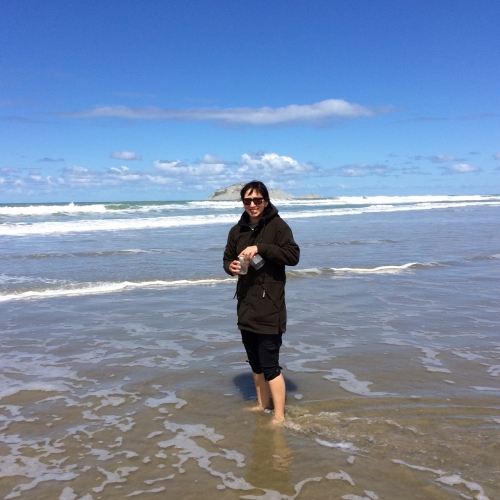I want to...
Current filter: Most popular
A to Z
Apply for a job
Biosecurity
Consents
Consultation
Contact Us
Environmental Data
Farmers Hub
Fix it or Report it
Information Request
Join an Event
Leasehold Land
Meetings
Rates
Water Metering
Have Your Say
Favourite Swimming Spots Water Quality Info Online
Published: 2 November 2016

Hawke’s Bay beaches are great for swimming, and people can check before they head out to the water as the region’s water quality monitoring programme has begun this week.
Hawke’s Bay Regional Council’s recreational water quality programme monitors 38 sites in popular coastal, river and lake swimming spots from Mahanga to Porangahau every week, between 1 November and 31 March. The sites have been selected through surveys of people’s favourite recreational areas.
Results are available midweek on the #swimming page on this website.
“It’s simple for people to check water quality online. There’s been a lot of talk about the swimmability of the country’s rivers, and it’s so simple to go online during summer and find out,” says HBRC water quality scientist Anna Madarasz-Smith.
At the foot of this website's main webpages, the ‘Swimming’ map shows water quality monitoring results. Colour codes indicate where the water quality at a beach or river is suitable for swimming, or where caution is needed due to a poor water quality history, or where it’s unsuitable. This scale applies only to water quality and does not include other risks such as sea or river conditions.
The weekly water samples are assessed against the National Guidelines for Recreational Water Quality. Typically in Hawke’s Bay, water quality at coastal sites continues to be suitable for recreation most of the time. Freshwater river sites can vary more and are influenced by rainfall and river flows.
HBRC has information on its website about what people can look for at a river or beach.
“When you step into water and cannot see your feet, then it’d be best to swim somewhere else. Our best advice is for at least three days after heavy rain is to head to a swimming pool to cool off, as plenty of sediment and contamination washes down our rivers and along the coast,” says Anna.
Lagoons are more likely to have high levels of contamination from faecal bacteria. Lagoons have shallow, slow moving and, therefore, warmer water. Some lagoons can have high numbers of waterfowl which add to the contamination.
“A warm, shallow lagoon might seem lovely to wallow or play in – especially for small children - but always check water quality before swimming in a lagoon or any shallow stream crossing a beach,” says Anna.
Signs are put up by local councils to warn against swimming when water quality gets too poor, and signs stay up until a test shows that the water is clear again.
While there has been a lot of concern expressed about water quality in the Tukituki river, the river had very few water quality alerts last season. Water quality in the catchment as a whole should improve with the roll out of the Tukituki Plan which requires stock exclusion from waterways, as animals are a significant contributor to faecal contamination if they have free access to rivers and streams.
HBRC’s water quality scientists regularly follow up poor results by tracking the source of faecal contamination to find out which animals are causing the problem. They also do visual checks for Phormidium, an algae that grows in most of the region’s rivers, including in back country rivers, and which can affect people and dogs.
Anyone who gets a rash or infection or gets ill after swimming, should see a doctor for treatment.
The water quality monitoring programme is managed jointly by Hawke’s Bay Regional Council with the Public Health Unit of Hawke’s Bay District Health Board. Local councils also take a role in ensuring the public are well-informed about water quality.
Disclaimers and Copyright
While every endeavour has been taken by the Hawke's Bay Regional Council to ensure that the information on this website is
accurate and up to date, Hawke's Bay Regional Council shall not be liable for any loss suffered through the use, directly or indirectly, of information on this website. Information contained has been assembled in good faith.
Some of the information available in this site is from the New Zealand Public domain and supplied by relevant
government agencies. Hawke's Bay Regional Council cannot accept any liability for its accuracy or content.
Portions of the information and material on this site, including data, pages, documents, online
graphics and images are protected by copyright, unless specifically notified to the contrary. Externally sourced
information or material is copyright to the respective provider.
© Hawke's Bay Regional Council - www.hbrc.govt.nz / +64 6 835 9200 / info@hbrc.govt.nz


